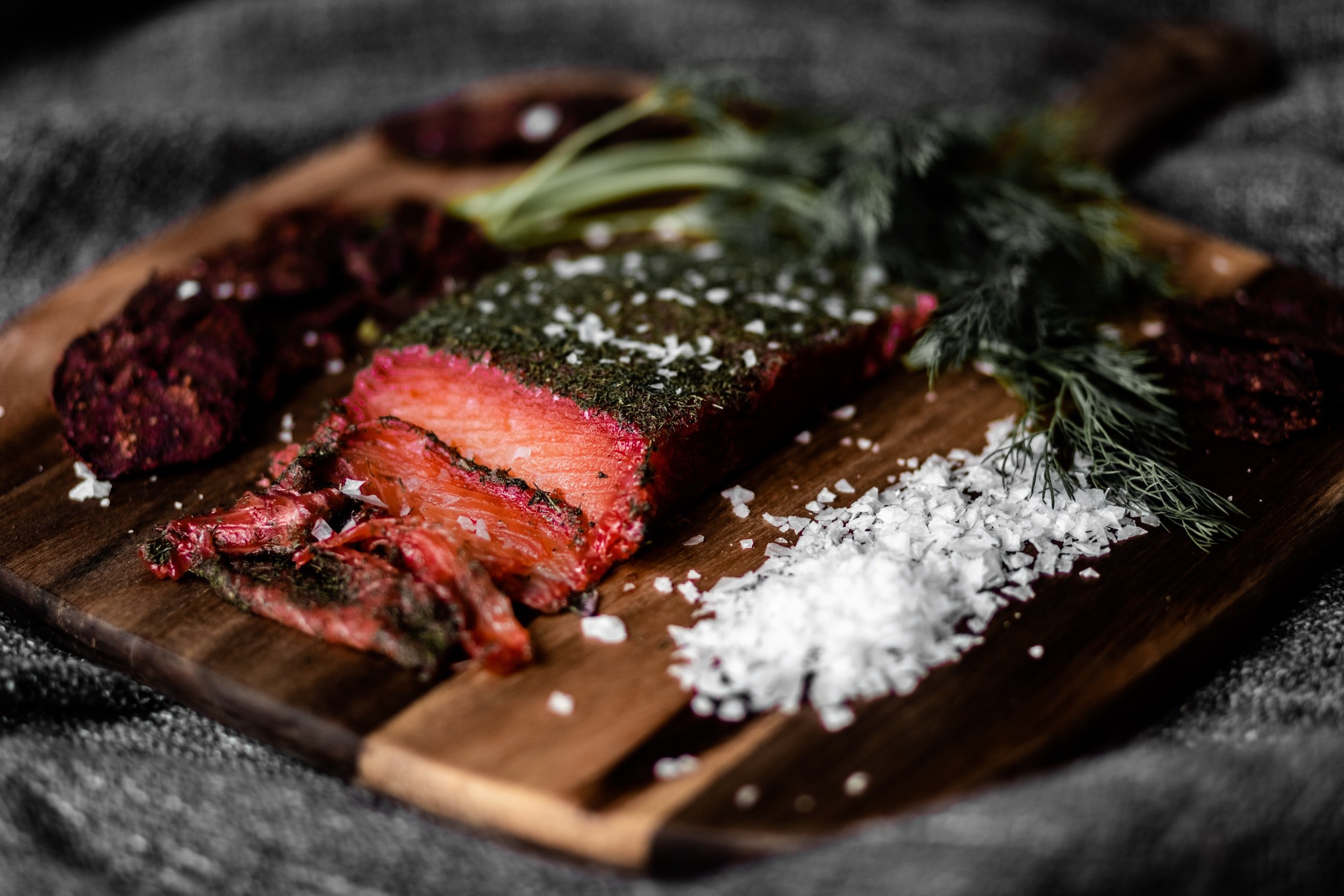Tenderizing Grassfed Beef
Pasture-raised cows get a lot more exercise than those raised in a feedlot. This results in less marbeling, so we usually recommend a bit of prop work to increase the tenderness of the meat.
Aging meat is one of the most common ways to tenderize meat. However, we know that for some people, aging isn’t for you—and that’s okay! Here, you’ll find a variety of ways to tenderize your meat.
Physically Tenderize
This may seem obvious, but a meat mallet can be an effective way to break down tough muscle fibers. Place your meat between parchment paper or in a plastic bag, and use a meat mallet or rolling pin to pound a few times. But don’t over work the meat, or you’ll turn your steak into mush.
Alternatively, you can lightly score the surface in a crosshatch pattern with a knife.
Use a Marinade
Flank steak, skirt steak, and London Broil make excellent grilling steaks, but they’re pretty tough if not properly tenderized. Using an acidic marinade containing ingredients such as lemon juice, buttermilk, or vinegar adds flavor and give the meat a “pre-cook” before it hits the grill. Just don’t marinate for more than 30-120 minutes, or it’ll become mushy.
Salt
Salt is one of the most important ingredients in your kitchen. In fact, we have an entire article about salting meat, so it should come as no surprise that salt can work to tenderize meat. It works to draw out moisture from the meat which concentrates the flavor. You can “dry brine” your meat with salt for up to 24 hours.
You can also combine salt with herbs and spices such as smoked paprika, cayenne, cumin, and mustard powder.
Room Temperature
While important no matter what type of beef you are cooking, it is particularly important with grass-fed beef and other lean cuts of meat. These cuts need to cook quickly over higher heat and since there is not a lot of fat, they’re less forgiving if overcooked, even slightly. Letting the meat come to room temperature on the counter—we recommend for 30 minutes—before cooking will help it cook evenly.
Low-and-Slow
Budget cuts such as a chuck roast require low and slow cooking. Braising breaks down the collagen in the cooking liquid and allows tough muscle fibers to separate. Be sure to allow the time to cook these meats properly, as they could take four or more hours.
Rest
No, not you silly! You may be tired after cooking, but it’s your meat that needs to rest. While you may want to dig into your delicious meal right away, even a well-prepared cut of meat will turn out dry and tough if it’s not allowed to rest. A rule of thumb is five minutes per inch of thickness for steaks or ten minutes per pound for roasts. This allows the juices to redistribute within the meat instead of spilling onto the cutting board.
Don’t Overcook!
A thermometer can be your best friend when cooking steaks to test for doneness. Temperature changes quickly and you can go from perfectly cooked to hockey puck in less than a minute. If you follow our previous tip (and you should), your meat will continue to cook while it rests, so when it reaches a temperature ten degrees lower than your desired temperature, it’s done.
Beef cuts are best at the rarest temp, so it is recommended not to cook past medium.
Against the Grain
Meat has muscle fibers that run throughout them. By making cuts parallel to the muscle fibers, you’ll need to use your teeth to break through them as you chew. Instead, cut against the muscle fibers so they cut apart easily.
The Baldwin Farm Difference
We are proudly helping cultivate a lifestyle built on food meant to nourish. Food has a direct connection to our health, and we cultivate our food to be healthy, natural, and delicious. We pride ourselves on humanely raising the animals on lush pastures, abstaining from growth hormones and antibiotics, and ensuring only organic feed.







